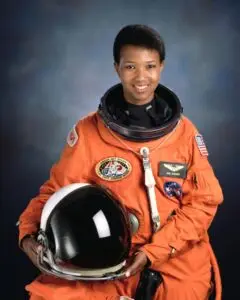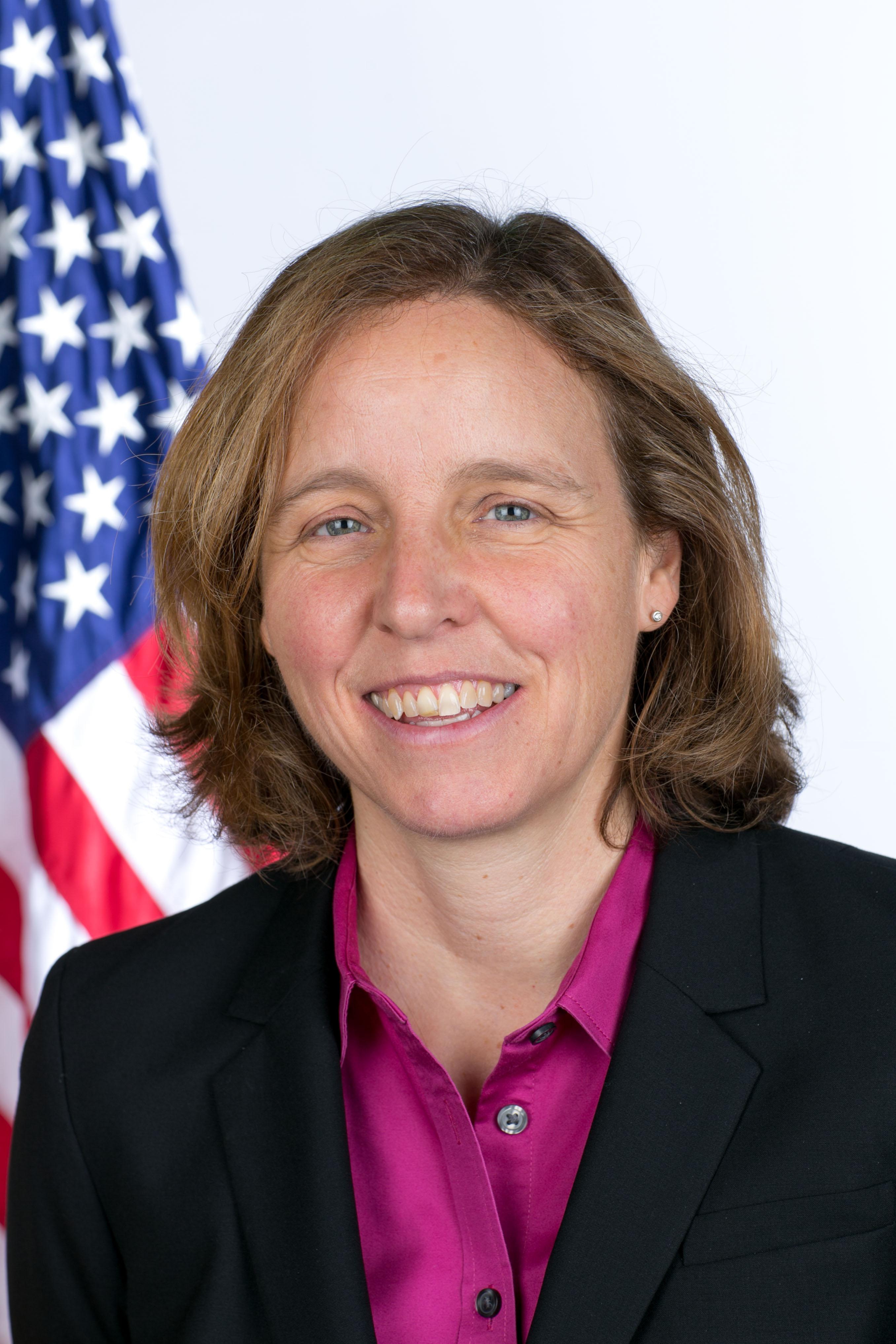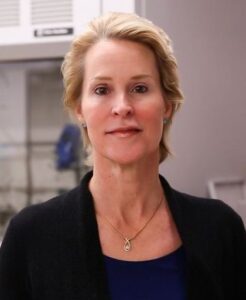Famous Women In STEM
Mae Jemison

Mae Jemison’s career offers a powerful example of how pursuing a path in STEM can lead to incredible opportunities and meaningful work. In 1977, she began studying at Cornell University’s medical school, focusing on international medicine (Britannica). Her experiences, such as volunteering at a Cambodian refugee camp and conducting research in Kenya, highlight how a career in STEM can open doors to impactful, real-world experiences. After earning her medical degree in 1981, Jemison continued to make a difference by joining the Peace Corps in West Africa. There, she managed healthcare for Peace Corps and U.S. embassy staff while collaborating with organizations like the National Institutes of Health and the CDC on research – including the development of a hepatitis B vaccine (Britannica).
Jemison’s career took another significant step when she applied to NASA in 1986; she was selected from over 2,000 applicants (Britannica). After completing astronaut training in 1988, Jemison worked on a number of space missions. She most notably contributed to the first successful U.S.-Japan joint mission, STS-47, in 1992 (Britannica).
Her journey shows that STEM fields are not just about technical skills: They’re about making an impact, exploring new frontiers, and solving real-world problems. If you’re someone who enjoys challenges and wants to contribute to advancing knowledge and technology, STEM offers a wide range of paths that can lead to a fulfilling and influential career, just like Mae Jemison’s. With so many exciting opportunities, it’s a field that has something for everyone.
Megan Smith
 In September 2014, Megan Smith was appointed U.S. Chief Technology Officer (CTO) by President Obama. She played a key role in shaping the nation’s technology policies and driving innovation (The White House). Before joining the White House, however, Smith had an extensive career at Google, where she served as Vice President. In this role, she led the acquisition of platforms like Google Earth and Google Maps, and co-created initiatives such as “SolveForX” and “WomenTechmakers,” which focus on fostering innovation and diversity in tech (The White House). These contributions highlight the diverse opportunities in STEM, from technological development to advocating for greater representation in the industry.
In September 2014, Megan Smith was appointed U.S. Chief Technology Officer (CTO) by President Obama. She played a key role in shaping the nation’s technology policies and driving innovation (The White House). Before joining the White House, however, Smith had an extensive career at Google, where she served as Vice President. In this role, she led the acquisition of platforms like Google Earth and Google Maps, and co-created initiatives such as “SolveForX” and “WomenTechmakers,” which focus on fostering innovation and diversity in tech (The White House). These contributions highlight the diverse opportunities in STEM, from technological development to advocating for greater representation in the industry.
Smith also served as CEO of PlanetOut, a pioneering LGBT online community, and worked on early smartphone technologies at General Magic and Apple Japan (The White House). Her work spans a range of engineering projects, including solar cookstoves and a solar car designed by an MIT student team (The White House).
With degrees in Mechanical Engineering from MIT, Smith’s career demonstrates the potential for influential work in STEM. Her journey emphasizes that pursuing a STEM career not only offers the chance to work on cutting-edge technologies but also provides the opportunity to make a significant impact in both the public and private sectors. For those interested in these fields, Smith’s accomplishments serve as a powerful example of what is possible.
Frances Arnold

Frances Arnold, a prominent faculty member at ICB and Caltech, is widely recognized for her pioneering contributions to Bioengineering, particularly in the development of directed evolution. In 2014, she was inducted into the National Inventors Hall of Fame (NIHF) for her transformative work, joining a distinguished group of inventors such as Thomas Edison and the Wright brothers (ICB). Arnold’s research has redefined Bioengineering by using evolutionary principles to design novel biological systems; these systems have applications in sustainable biofuels, medicine, and eco-friendly manufacturing. Her methods have become integral to laboratories across the globe, advancing both scientific understanding and practical solutions (ICB).
At Caltech, Arnold’s work has bridged the gap between Genetic Engineering and real-world applications, offering innovative solutions to global issues such as energy sustainability and environmental impact (ICB). Her approach to directed evolution – where randomly mutated proteins are selected and bred to exhibit specific traits – has provided a new way to solve problems that nature itself has not addressed (ICB). With over 300 U.S. patents and involvement in the founding of successful spin-off companies like Gevo, Arnold’s influence extends far beyond academia (ICB).
Arnold’s accolades include the National Medal of Technology and Innovation and the Draper Prize, the latter of which made her the first woman to receive the honor (ICB). She is also one of the few to be elected to all three branches of the National Academies, a testament to her profound impact on the scientific community (ICB).
For young women considering STEM careers, Frances Arnold’s path exemplifies the importance of resilience and vision. Her success highlights how combining curiosity with determination can lead to groundbreaking advancements that benefit both science and society.
References
- “Mae Jemison.” Encyclopædia Britannica, Encyclopædia Britannica, inc., explore.britannica.com/explore/space/mae-jemison/.
- “Megan Smith.” The White House, National Archives and Records Administration, obamawhitehouse.archives.gov/administration/eop/ostp/about/leadershipstaff/smith/.
“ICB Bioengineer Frances Arnold Is Inducted into the National Inventors Hall of Fame.” ICB*Institute for Collaborative Biotechnologies, www.icb.ucsb.edu/news/all/2014/icb-bioengineer-frances-arnold-inducted-national-inventors-hall-fame.
